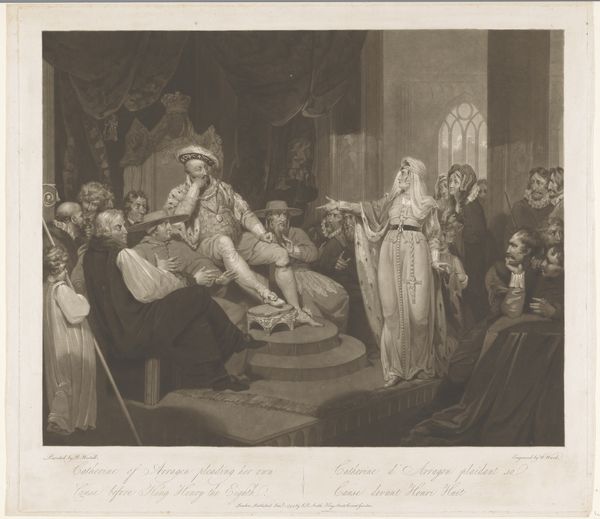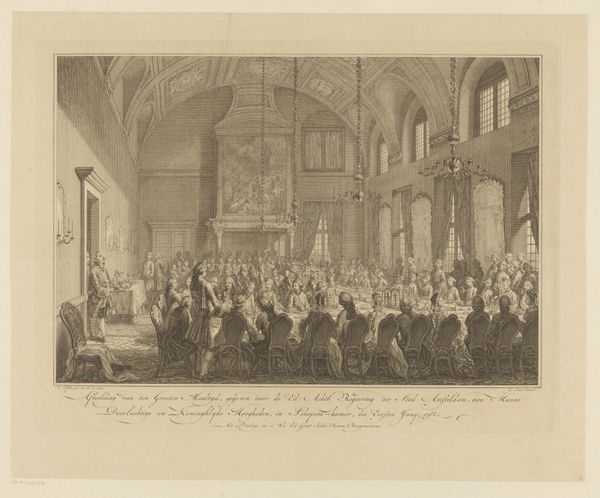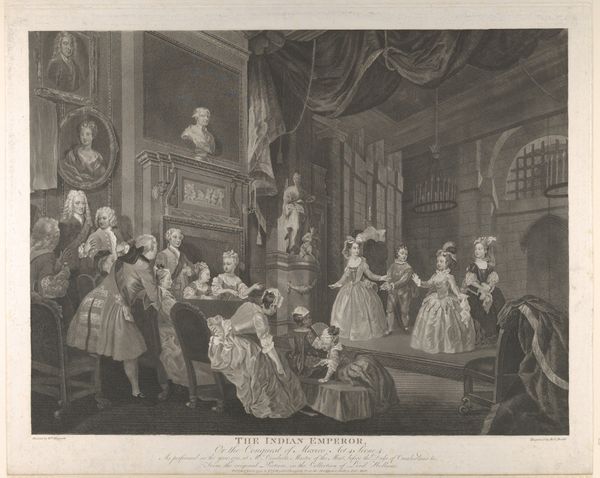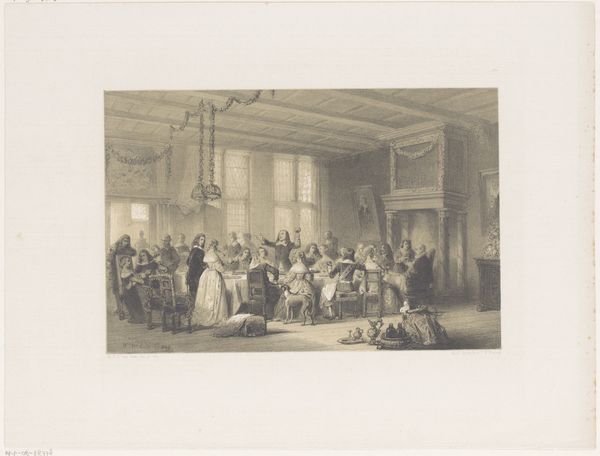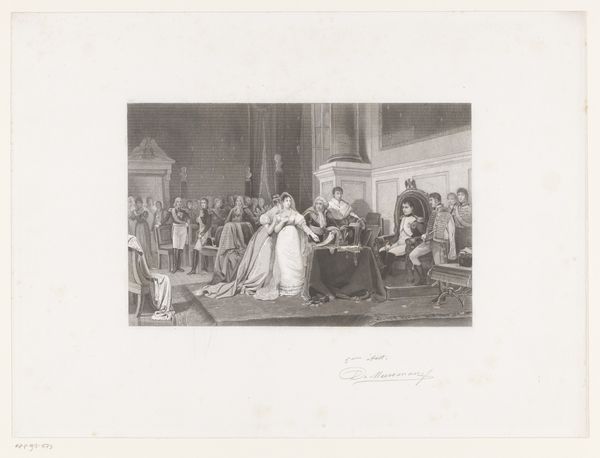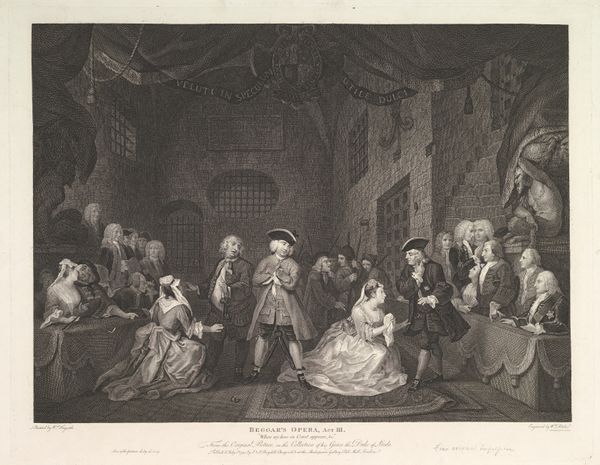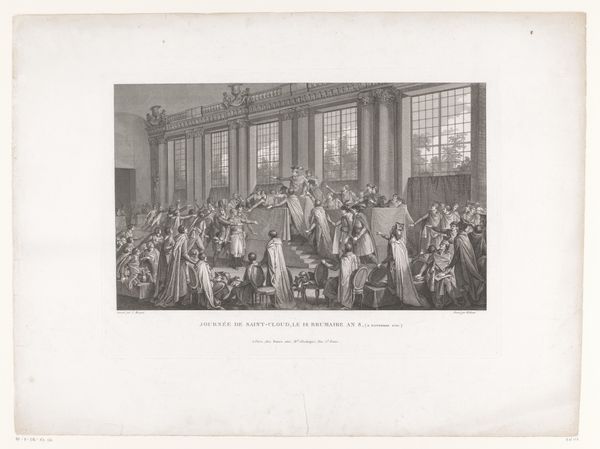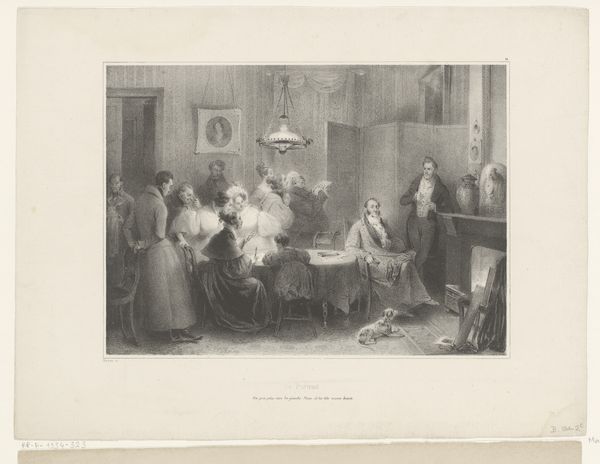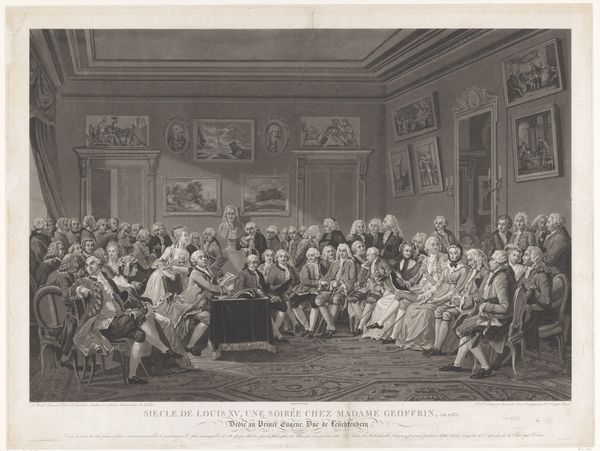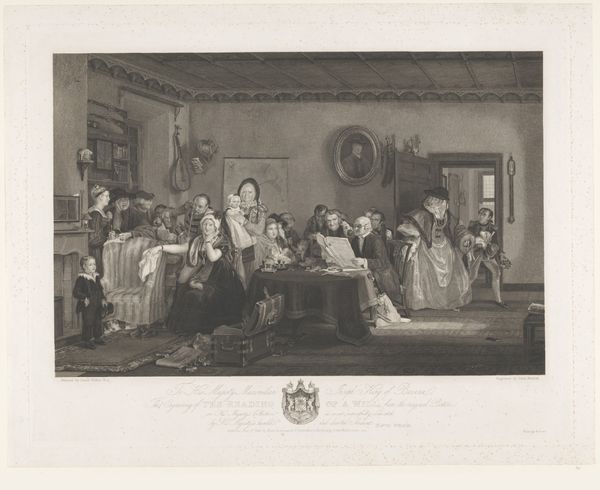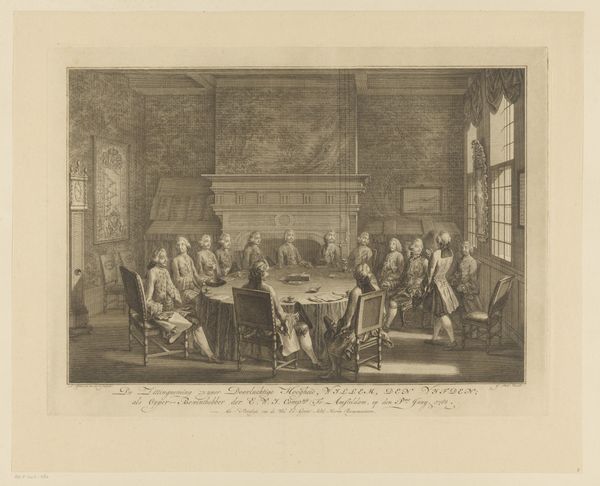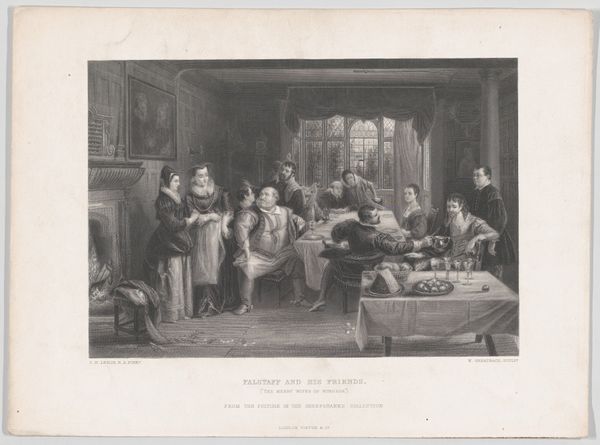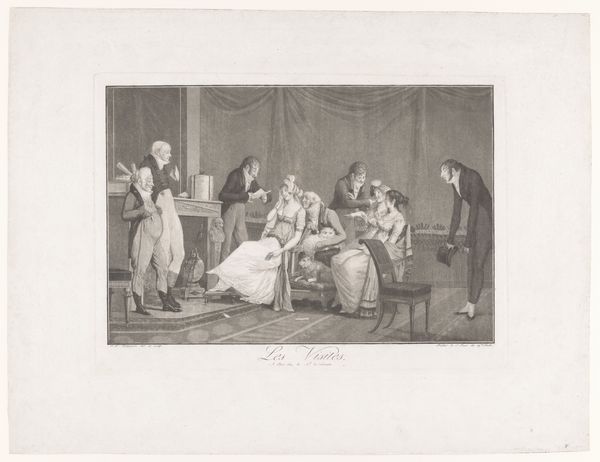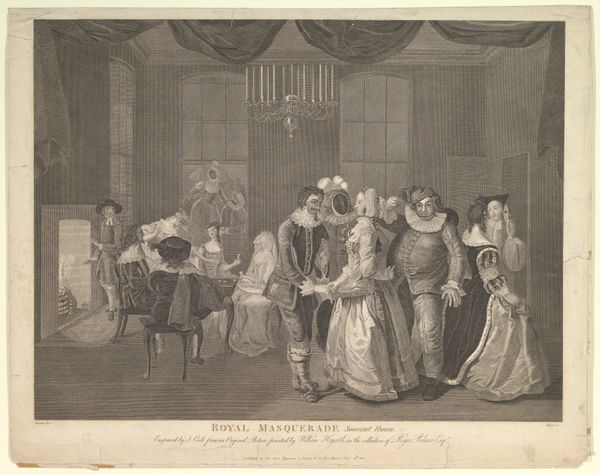
De laatste slachtoffers van het Schrikbewind. Oproeping van de ter dood veroordeelden, 27 Juli 1794 1850 - 1905
0:00
0:00
pieterwillemmarinustrap
Rijksmuseum
Dimensions: height 592 mm, width 857 mm
Copyright: Rijks Museum: Open Domain
Curator: At first glance, it feels… well, incredibly heavy. Like witnessing a collective breakdown. All the dark tones really amplify the sense of despair. Editor: We are looking at “The Last Victims of the Reign of Terror. Calling of the Condemned, July 27, 1794," created between 1850 and 1905 by Pieter Willem Marinus Trap. It’s currently housed right here at the Rijksmuseum. As a print, Trap skillfully uses engraving techniques. Curator: Ah, engraving... Adds that certain grim weightiness, doesn't it? Look at how Trap bunches the figures together. It's claustrophobic; they're trapped not just by their impending doom, but by each other’s grief, like some kind of sick joke! The narrative art theme really jumps out here – each face tells a story. Editor: The composition is quite effective in creating that atmosphere. See how the central figures, likely the condemned, are positioned almost directly under that barred archway—a gateway to the unknown. It mirrors their journey. Also note how the lines of the architecture guide the eye towards that vanishing point, underscoring the sense of finality. Curator: Absolutely, but that archway isn’t just about finality; there's light flooding in. Perhaps Trap's suggesting a sliver of hope or even just… the absurdity of hope in the face of death. And the guy slumped in the chair – totally detached. Gives a counterpoint to the hysterical grief around him. The details add real emotional depth. Editor: Speaking of emotional depth, Trap employs classic Romanticism techniques, wouldn't you say? This is evident in the emphasis on strong feelings, the drama, and the focus on individuals confronting extraordinary circumstances, with a touch of the dramatic thrown in. And this is, of course, a moment plucked straight from history, given visual life. Curator: What I love is how a simple print manages to pack such a punch! Looking at it now, I realize there’s even a subtle, personal touch in how these figures are posed—evoking tenderness even when dealing with grand, historical themes. A lot to ponder about terror, loss, and… well, humanity. Editor: Indeed. It leaves one contemplating how such meticulous visual choices can amplify an artist's message, allowing historical scenes to powerfully echo through generations.
Comments
No comments
Be the first to comment and join the conversation on the ultimate creative platform.
